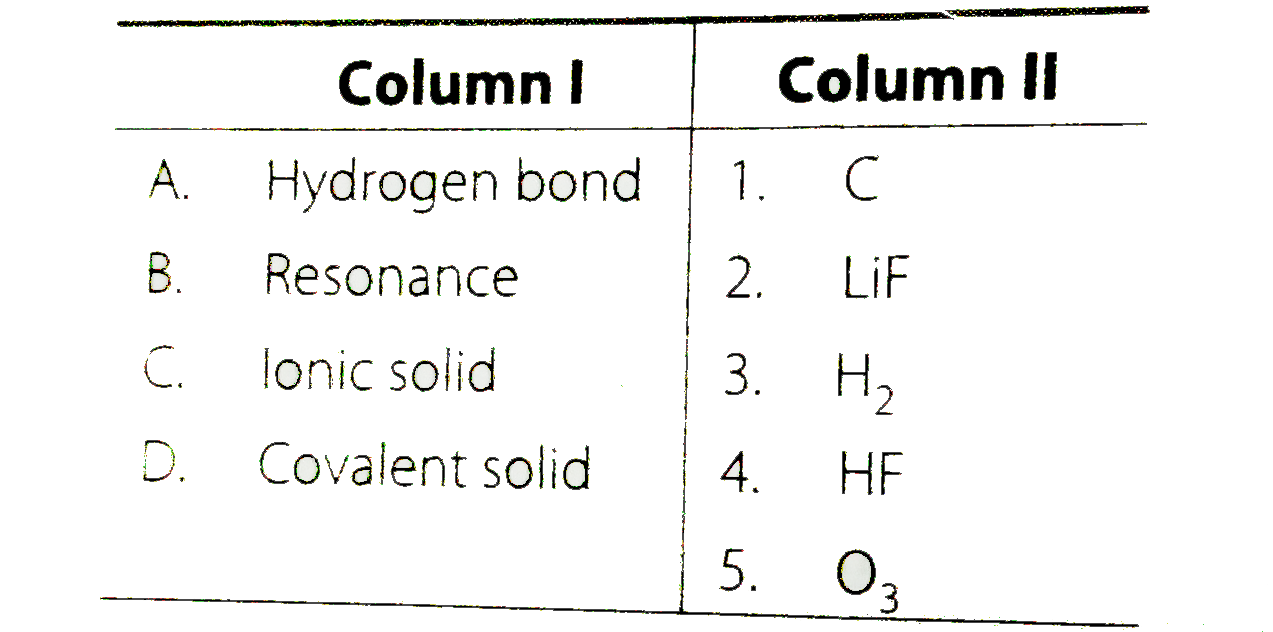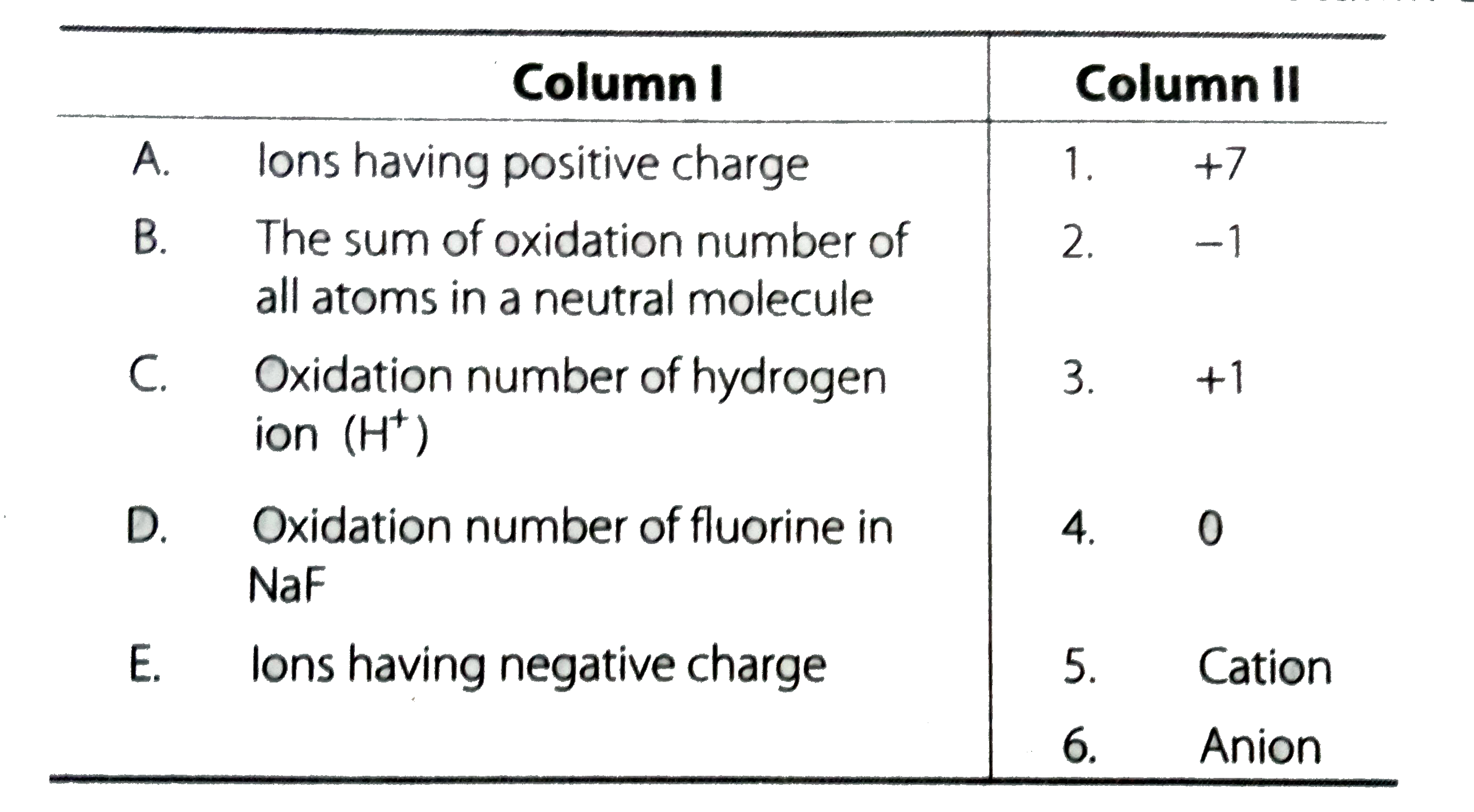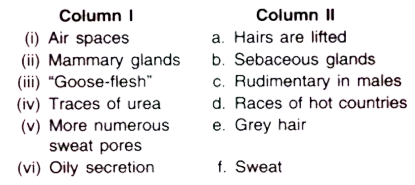Match the items given in Column 1 with examples give in Column II.
Column IColumn II(a)Hydrogen bond(i)C(b)Resonance(ii)LiF(c)Ionic solid(iii)H2(d)Covalent solid(iv)HF(v)O3
The correct Answer is:(a) - (iv) - (b) - (v) ; ( c) - (ii) ; (d) - (i)
To solve the problem of matching items from Column I with examples in Column II, we will analyze each item in Column I and find the corresponding example in Column II.
1. Identify Hydrogen Bond:
- A hydrogen bond is formed when hydrogen is bonded to a highly electronegative atom (like oxygen, nitrogen, or fluorine) and interacts with another electronegative atom.
- Example from Column II: HF (Hydrogen Fluoride) is known to form hydrogen bonds due to the presence of fluorine, which is highly electronegative.
- Match: (a) Hydrogen bond → (iv) HF
2. Identify Resonance:
- Resonance occurs when a molecule can be represented by two or more valid Lewis structures. Ozone (O3) is a classic example where the double bond can shift between the two oxygen atoms.
- Example from Column II: O3 (Ozone) has multiple resonance structures.
- Match: (b) Resonance → (v) O3
3. Identify Ionic Solid:
- An ionic solid is formed from the electrostatic attraction between ions, typically between a metal and a non-metal.
- Example from Column II: LiF (Lithium Fluoride) is formed from lithium (a metal) and fluorine (a non-metal), making it an ionic compound.
- Match: (c) Ionic solid → (ii) LiF
4. Identify Covalent Solid:
- Covalent solids consist of atoms connected by covalent bonds in a network. Carbon in its diamond form is a prime example of a covalent solid.
- Example from Column II: C (Carbon) represents covalent solids like diamond and graphite.
- Match: (d) Covalent solid → (i) C
Final Matches:
- (a) Hydrogen bond → (iv) HF
- (b) Resonance → (v) O3
- (c) Ionic solid → (ii) LiF
- (d) Covalent solid → (i) C
Summary of Matches:
- A → iv
- B → v
- C → ii
- D → i
- A hydrogen bond is formed when hydrogen is bonded to a highly electronegative atom (like oxygen, nitrogen, or fluorine) and interacts with another electronegative atom.
- Example from Column II: HF (Hydrogen Fluoride) is known to form hydrogen bonds due to the presence of fluorine, which is highly electronegative.
- Match: (a) Hydrogen bond → (iv) HF
- Resonance occurs when a molecule can be represented by two or more valid Lewis structures. Ozone (O3) is a classic example where the double bond can shift between the two oxygen atoms.
- Example from Column II: O3 (Ozone) has multiple resonance structures.
- Match: (b) Resonance → (v) O3
- An ionic solid is formed from the electrostatic attraction between ions, typically between a metal and a non-metal.
- Example from Column II: LiF (Lithium Fluoride) is formed from lithium (a metal) and fluorine (a non-metal), making it an ionic compound.
- Match: (c) Ionic solid → (ii) LiF
- Covalent solids consist of atoms connected by covalent bonds in a network. Carbon in its diamond form is a prime example of a covalent solid.
- Example from Column II: C (Carbon) represents covalent solids like diamond and graphite.
- Match: (d) Covalent solid → (i) C
- (a) Hydrogen bond → (iv) HF
- (b) Resonance → (v) O3
- (c) Ionic solid → (ii) LiF
- (d) Covalent solid → (i) C
- A → iv
- B → v
- C → ii
- D → i
Similar Questions
Match the items given in column i with example given in Column II

View Solutionmatch the items given in column I with the items given in column II.

View Solutionmatch the items given in column I with the items given in column II.

View SolutionMatch the soaps given in Column I with items given in column II.

View SolutionMatch the items in Column I with the relevant item in column II.

View SolutionMatch the compounds given in Column-I with the items given in Column - II.

View SolutionMatch the items in Column I with as many item as possible in Column II.

View SolutionMatch the items in column I with relevant items in column II

View SolutionMatch the items in column I with those given in column II.

View SolutionMatch the items in Column I with those in Column II

View Solution
